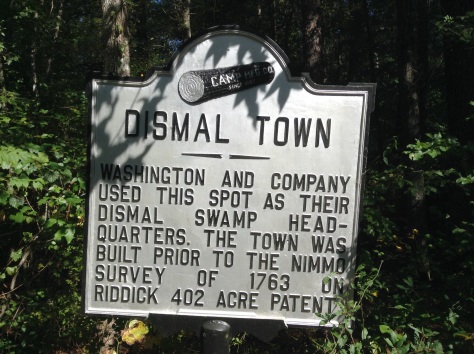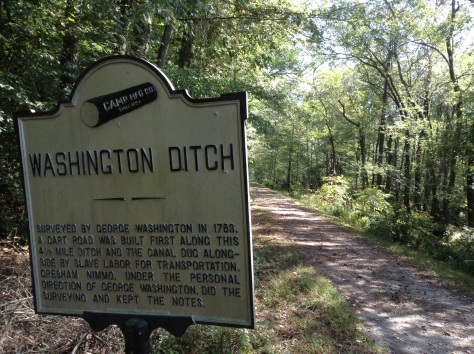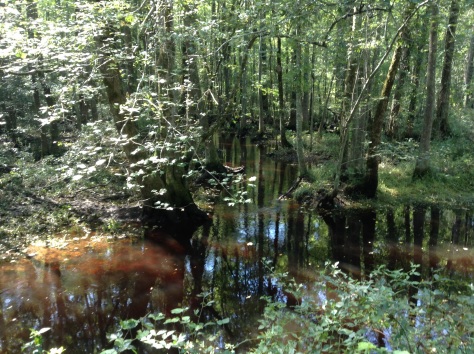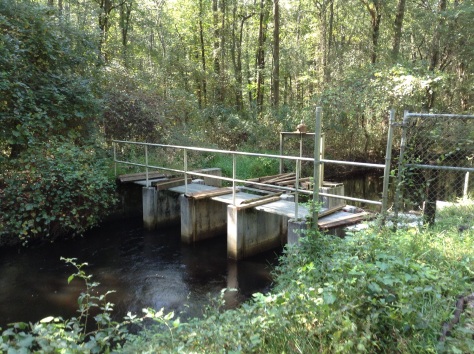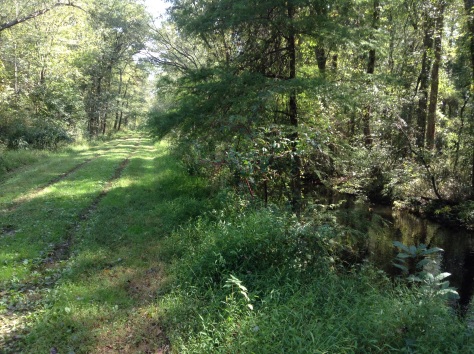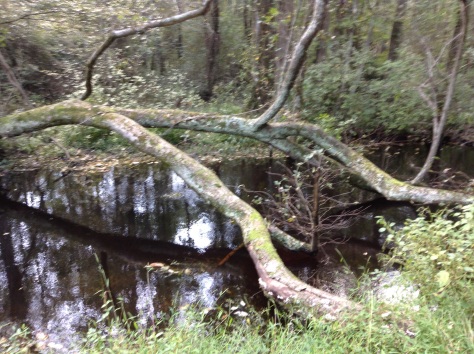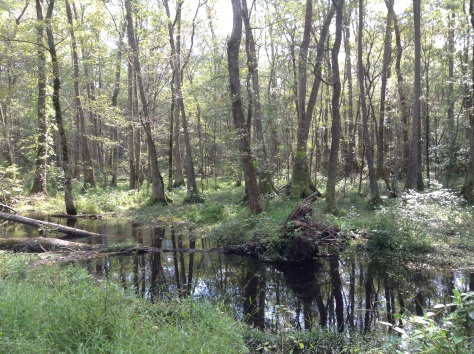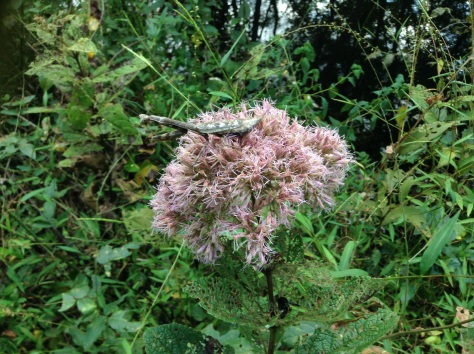We have returned to our hometown of Chesapeake, Virginia, USA. Of course, we are still hiking and we live near the Great Dismal Swamp. The swamp is a national wildlife refuge that covers a huge stretch of wetland — originally over a million acres. During the summer, the swamp is extremely hot and filled with mosquitoes but it was pleasant on this late October day.
We walk along the George Washington Ditch, named for the first president of the USA. Washington and 11 other leading Virginia colonists formed the Dismal Swamp Company in 1763. They planned to drain the swamp and profit by selling the land. Their attempt failed and the endeavor did not make a profit until 1810, long after Washington’s death in 1799.
I read Lao tsu’s Tao te Ching – chapter 12 (translated by Steven Mitchell):
“Colors blind the eye.
Sounds deafen the ear.
Flavors numb the taste.
Thoughts weaken the mind.
Desires weather the heart.
The master observes the world
but trusts his inner vision.
He allows things to come and go.
His heart is as open as the sky.”
We pass the historical marker for Dismal Town, the headquarters for the colonial company.
I am thinking about Lao tsu’s statement that sensation blocks inner perception. People can gain this realization through meditation. By focusing on what is going on inside, you can see how what is going on outside prevents you from seeing inside clearly. This insight can be valuable to you — the reality that makes you feel bad is not the complete reality — there is an inner reality — the problem for some people is that their inner reality also feels bad.
I say: meditate even if it feels bad inside. The process will help you realize that everything comes and goes — even your negative thoughts, memories, emotions, sensations.
The marker describes George Washington’s efforts as a surveyer.
The sign does not tell about the problems the colonial partners experienced. Each member supplied slaves to dig the canals to drain the swamp, but they sent their less productive slaves and the project made slow progress. It was a real estate scheme that did not work out for the rich colonists. In 1790, the company abandoned the plan to drain the swamp and Washinton tried unsucessfully to sell his shares.
The slaves working in the swamp had a high mortality rate – but, over time, they achieved a degree of freedom. Their masters did not wish to sleep in the wilderness and tended to leave the slaves alone. No one bothered the slaves as long as they brought out logs and shingles that could be sold.
During the early 1800’s and until the end of the Civil War, the swamp was a refuge for run-away slaves. About 2000 of them lived within the wilderness, hunting and raising vegetables. It was a difficult place to live but there were deer, bears, raccoons, squirrels, and otters available for hunting.
Events did not turn out as Washington had planned. Digging the canal produced much suffering but later the swamp allowed freedom for many.
Lao tsu suggests noting how everything comes and goes. What can be gained by following his advice?
I watch the blooms attract a praying mantis and a bumblebee.
If you gain the ability to look inside yourself, you can increase inner harmony. Like the slaves living within the Great Dismal Swamp, you achieve a form of freedom. You can learn how to be unharmed by the colors, sounds, flavors, thoughts, desires that make you feel bad.
The master observes the world but trusts her inner vision.
She allows things to come and go.
Your sensations, emotions, desires block your use of inner vision.
Here is my suggestion: look inside yourself and identify the negative self talk. Become aware of the negative stories you tell yourself — that you are unattractive, dull, or worthless. Then design phrases to refute these stories. This is not a matter of logic or reality. When a negative thought arises, refute it.
Depressed people say to me, “My problems are real. They cannot be solved. That is why I am depressed.”
The slaves has real problems. By going into the swamp, they achieved freedom.
Go inside yourself and develop the skills required to survive — even if it feels uncomfortable when you start.
When you go inside yourself, you can learn to let the thoughts and issues that torment you come and go. You can free yourself from the effects of negativity.
The revolutionary colonists were unable to drain the swamp but eventually they constructed enough canals that a later generation was able to cut and sell the lumber in the swamp. This created an environmental problem that has yet to be resolved. The forest has grown back but the natural water system has been disrupted by the canals. Washington created our country’s first ecological disaster.
Modern experts study the ecology of the swamp, seeking to figure out what they should do. They have decided to do nothing. Lao tsu would approve.
The water flows as it wants. Most locks are open.
Today, visitors walk through the Great Dismal Swamp on trails that follow the canals. Most canal locks have been dismantled. The land has been set aside as a widelife refuge. There are over 400 bears in the swamp.
The water flows in the ditch
The swamp is beautiful and peaceful but it is not an easy place for humans to live.
When you pray, you reveal to yourself your desires. Take note of them and allow these thoughts to slide away.
I watch a spider.
Can you see the snake? It is sliding into its hole in the brush — it is difficult to see.
If you look closely at your inner thoughts — and do not hold onto them — you will experience them sliding away.
Farmers raise cotton on land next to the Great Dismal Swamp boundary. Washington and his company had assumed that the soil in the swamp was very rich but this is not the case. Things thought to be correct are often not true.

Lake Drummond is at the heart of the Great Dismal Swamp.
During meditation, you can experience a tranquil lake inside your self — a place where you can find inner peace.
“She allows things to come and go.
Her heart is as open as the sky.”

